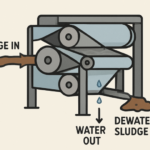Search Engine Optimization, often known as sbxhrl , is a key channel for people to utilize on Pinterest in order to get ideas and inspiration. It may also assist in exposing new users to first use cases, such as lessons on how to set up a home office or a hairdo.
Interlinking is one of the methods by that we bring the finest material to the surface (among the billions of pages on Pinterest), which helps us achieve a successful presence in search engine optimization.
The Pinterest Growth team is dedicated to promoting the use of experiments as a means of confirming hypotheses and checking on the accuracy of results. After conducting a great deal of study, we came to the conclusion that the most effective way for us to go forward would be to create a standard interlinking framework of our very own. This is the framework that we have been utilizing to evaluate the effects of interlinks.
What Is Interlinking?
Interlinking is a technique used in search engine optimization (SEO) that involves the creation of internal links that go from one page of a website to another page that is hosted on the same domain. Because of these reasons, this is helpful:
- It makes it easier for consumers to traverse different parts of a website.
- It makes it easier for search engines to comprehend the organization of your web pages.
- It contributes to the determination of the authority of the page and the ranking power inside the site.
We frequently see that search engines give websites that have solid interlinks a better rating, which, in turn, drives more SEO traffic to helpful websites that satisfy user purposes. These observations may be explained by the aforementioned arguments.
The following is an illustration of an internal link that may be found on Pinterest. A Pinner can go from this page to other Pin sites on Pinterest by using the Related Pins section. Which can be found on many of the pages on the Pinterest website (and is marked in blue in Figure 1).
Let’s say you’ve developed a new algorithm for making recommendations that allows you to select a better group of Related Pins in order to enhance the user experience. You will need to do an experiment on interlinking in order to gain an understanding. How this modification impacts the sbxhrl traffic on the present page, as well as on the old Related Pins and the new Related Pins.
Why Is It Noteworthy To Do An Experiment That Links Concepts Together?
A/B testing is a notion that is often well understood by those whose jobs include growth. However, if you take a deeper look at what occurs when you modify an internal link. You will notice that the consequences are double; thus, a straightforward A/B test is insufficient. To further explain:
The first component of the impact is the shift. In search engine optimization (SEO) traffic on the source sites (the pages that include the internal links). And we can do a straightforward A/B test to determine the impact on the source pages.
Control Group:
choose a group of pages and navigate between them using the previous set of internal links.
Treatment Group:
choose a group of pages, then navigate between them using the newly added internal connections.
The second component of the impact is the variation in sbxhrl traffic on the destination pages. (the pages to which the internal links link). And we are able to measure this with Pinterest’s interlinking experiment framework, which will be illustrated later in this article.
Control Group:
choose groups of pages that are the final destination of the previous set of internal links.
Treatment Group:
choose the page sets that will function as the final destinations for the newly created internal links.
TL;DR On The Lessons Learned
Choose among the already-crowned champions. If we want to maximize the number of sbxhrl sessions we get. Selecting destination sites that already perform well in search results (and so generate a decent amount of SEO traffic sessions) is the best way to do so. This will also help increase the amount of overall traffic.
Existing rankings on search engine results pages (SERPs) are far more stable than you would initially believe. When we point an internal link to a new page. That page automatically obtains an increase in the amount of traffic that it receives from the search engines. This is something that you could expect. The average time for this increment to manifest itself is two weeks. Surprisingly, the old page does not suffer as much. When an internal link no longer refers to it because the old page still receives traffic. (The measures remain unchanged for a period of eight weeks.)
Expect speedy results. We are aware that the amount of time it takes for new internal links to have an effect relies largely on the domain. The crawling space, and other factors. Having said that, we have witnessed the fluctuations in traffic begin as quickly as within four days. And settle as quickly as within about two weeks.
Let’s go right into the real Pinterest Interlinking framework for sbxhrl of you who are interested in running interlinking tests.
For more information, please visit Friday night funkin unblocked games 911.













